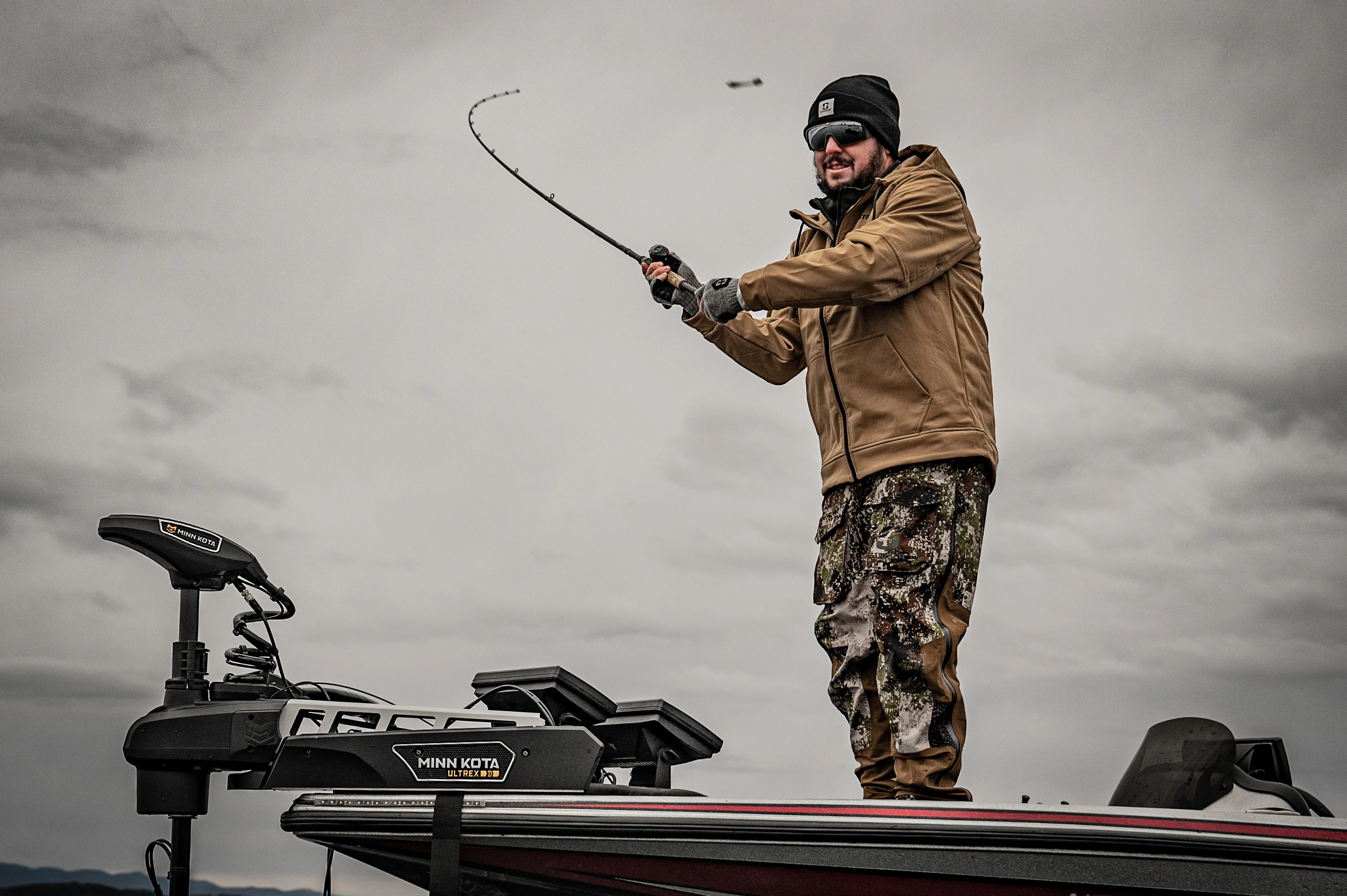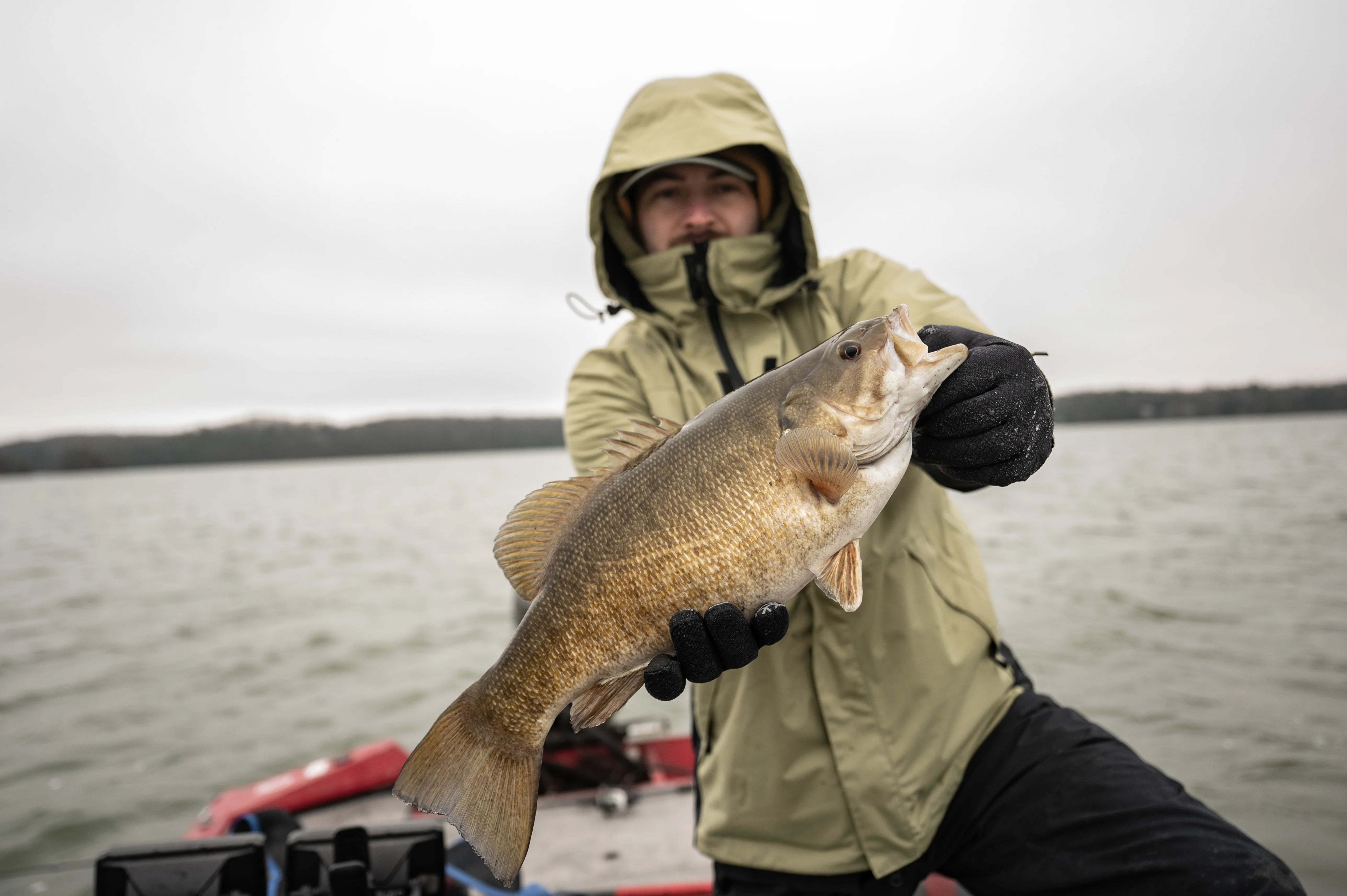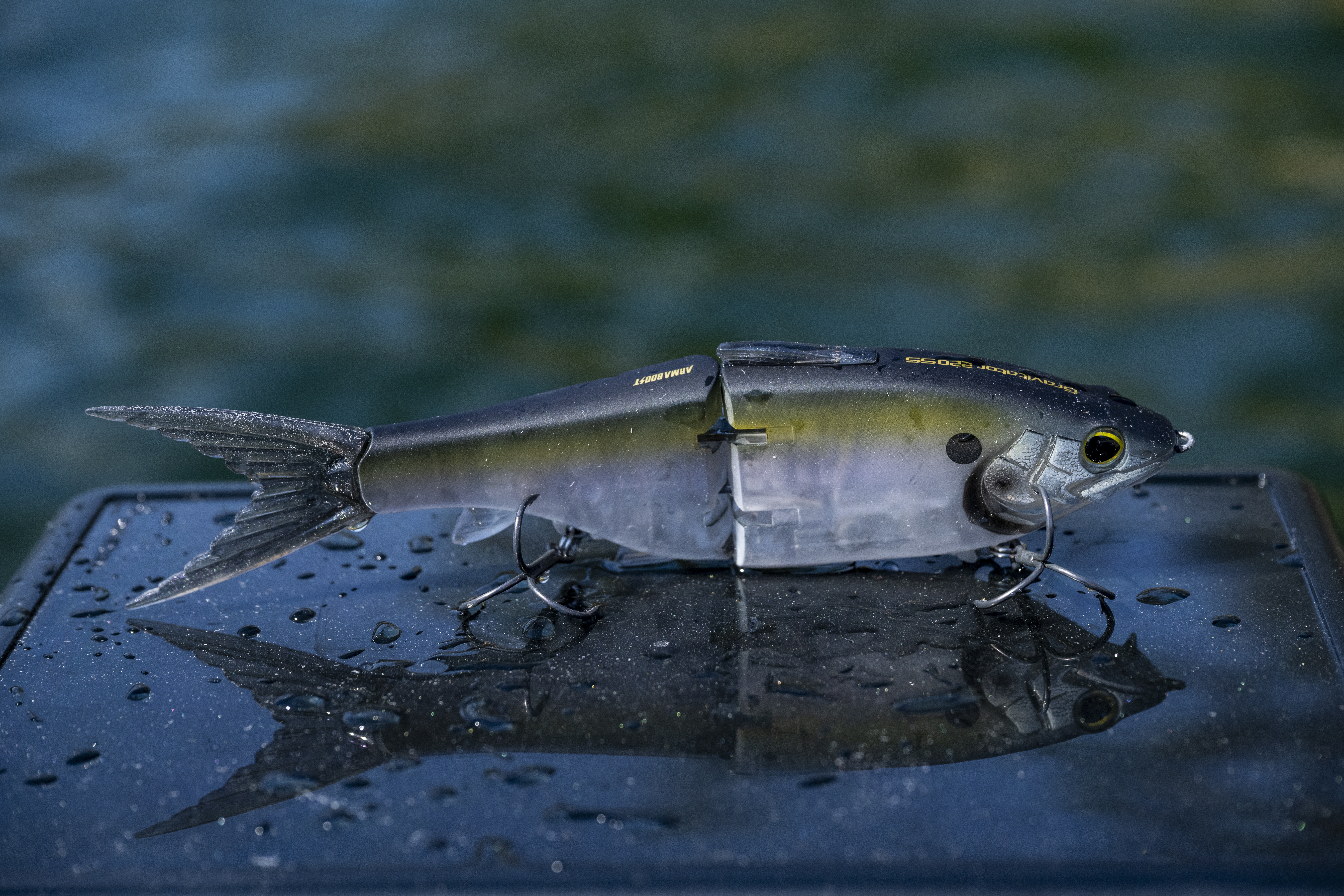As water temperatures drop and the days get shorter, bass begin to aggressively feed on baitfish. For this reason, bass anglers turn to jerkbaits and crankbaits to target autumn bronzebacks and bucketmouths. And while most baits come ready to fish right out of the package, there are several modifications anglers can make to improve their hookup ratio. These four intentional adjustments can help you maximize your fall opportunities and put more bass in the boat.

1. Add Weight to Get Your Bait Deeper
During the fall, you may need to reach deeper into the water column to tempt pressure-weary bass, as fish may be descending to avoid unfavorable weather or targeting deeper bait schools. Jerkbaits are usually the choice of bait for this, but if your favorite lure isn’t hitting the right depth, you can adjust it.
One of the easiest ways to get your bait down is to add adhesive lead strips to the bait’s belly. SPRO is currently dialing in the details of a prototype tungsten strip that bolsters the otherwise utilitarian item with various reflective color patterns on the outward-facing side. It releases next spring and will be perfect for jerkbaits, glidebaits, and hard-body swimbaits.
In the meantime, wrap copper or lead wire around treble hook shanks. First, form a loop at the top end of the shank and secure it to the treble hook’s eye. Missouri pro Mike McClelland offers this savvy tip: Before wrapping the wire, let it hang by that loop and place your bait in the water to observe and adjust the amount of wire needed to make your bait sink or suspend as desired.
You might also try upsizing or downsizing split rings to achieve different hard bait performance. Split ring pliers help, but McClelland uses a wheel grinder to grind the tips of needle-nose pliers as thin as possible (without compromising structural integrity) to facilitate the task.
2. Adjust Your Hooks Accordingly
Hook choice also impacts bait performance, which can affect the bait's weight or efficiency. The two most common problems with treble hook baits are sticking indecisive fish and keeping fish pinned up once they’re hooked. Round bend trebles generally do the best job of grabbing any fish that so much as sniffs your bait. That’s because the bite length from hook point to bend is greater than that of the EWG. The only drawback is that the round bend’s point stands roughly parallel to the shank, so bass throw the hook.
Comparatively, while the EWG treble generally won’t hook as many of the less committed fish, the ones that really want the bait get it and get it good. With inwardly angled points, an EWG treble latches and holds best, so it really comes down to noting how the fish are biting and making sure your bait has the right hardware.
As for lure weight, it’s pretty straightforward—larger, heavier hooks sink a bait faster, while smaller, lighter hooks mean a slower fall. To this point, if McClelland needs to lighten his jerkbait, he’ll replace the standard No. 5 trebles with No. 6 hooks. Because he wants a nose-down or level bait posture, he’ll first add the smaller hooks to the rear, then also the middle position. Conversely, to increase weight, McClelland swaps the No. 5 hooks with No. 4 trebles—front first, then middle.

3. Add Some Flash
To increase the appeal of a jerkbait, swimbait, or glide bait, consider adding some flash. Think of it as earrings for hard baits. Gamakatsu’s One Touch Treble attaches a willow-leaf blade or Colorado blade to a treble for eye candy at any speed or retrieve style. The design includes two glow beads and an open wire loop above the blade, which passes through the treble hook eye and lies against the shank with the blade suspended below the hook bends.
If you’re getting short strikes or if most of your fish are only getting the tail hook, putting a red treble on the front position often draws attention to the bait’s head. This should improve your hookup rate.
4. Fish with Feathers
The late Aaron Martens, widely considered one of the greatest angling minds the sport has ever known, used to carry a dedicated tackle tray filled with various dressed (feathered) trebles. From standard white to multiple colors and sparkly accents, Martens believed in matching his dressed trebles to the clarity of the water and the mood of the fish. This added motion and profile will often help trigger reluctant bass into biting.
Moreover, two-time Bassmaster Classic champion Hank Cherry often adds a black feather to a popper’s rear treble because it resembles an aquatic insect. The ruse tends to attract curious bream, and anytime you can distract the panfish, opportunistic largemouth will move in for the kill shot—ideally, focused on your bait.
Something else to consider: Topwater walkers will deliver with or without a dressed (feathered) rear treble, but it’s not only an aesthetic thing. Actually, feathered trebles add drag, which keeps a bait in the strike zone longer. This matters when a fired-up fish creates a big wake and pushes the bait out of its reach.

